
2024 is a new year, a new start, a new you! And with all new beginnings, there are exciting new experiences to come. In your quest to become a better home chef, there is no better place to start than by mastering essential cooking techniques, opening up endless possibilities in the kitchen.
From how to sear meat and how to truss a chicken for a roast, Le Creuset recently launched its own Cooking Technique Series. In our Cooking School series, we break down the most popular cooking, baking and knife techniques with easy-to-follow how-to videos.
Le Creuset’s cookware, including our iconic Dutch Ovens, Iron Handle Skillets, and versatile fry pans, have been carefully designed to deliver a lifetime of delicious meals, helping you expand your culinary horizons. Whether you are a novice home cook, or an expert chef, these pieces of cookware are perfectly suited for experimenting in the kitchen.
Technique #1: How to Brown Butter
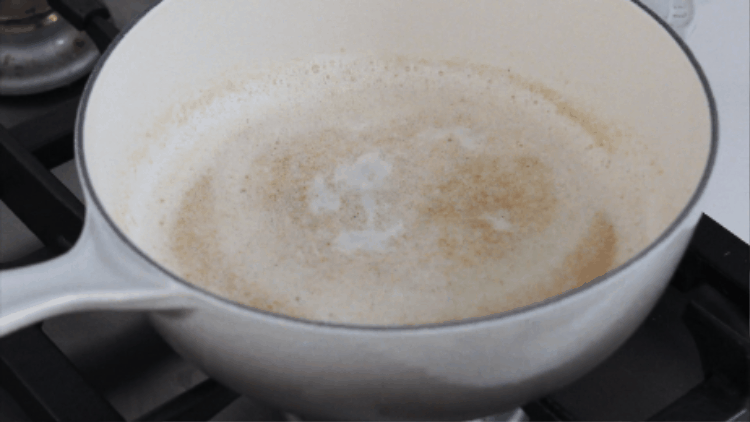
Learning how to brown butter can be used to enhance the flavor profile of various dishes, particularly as you tackle new baking techniques and recipes. Browning butter involves cooking it until it transforms into a golden-brown, nutty delight also known as beurre noisette. Perfectly suited for your Le Creuset Saucier, this versatile piece of cookware features a smoothly curved interior that simplifies the stirring of ingredients.
Our Saucier provides superior heat retention as the butter slowly melts and transforms into a luscious, golden elixir. Browned butter can be a game-changer for a range of recipes, injecting a complex, rich, nutty aroma and flavour. Looking to get started with this cooking technique? Look no further than our Mashed Potatoes with Brown Butter and Herbs.
Technique #2: How to Truss a Chicken for Roasting
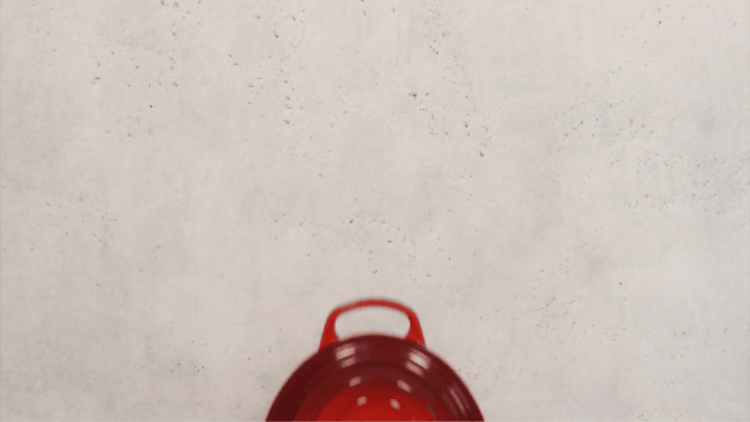
Knowing how to truss a chicken for roasting is particularly useful come holiday season as home chefs look to earn the title of the ultimate host. Trussing, put simply, involves tying the chicken with kitchen twine to maintain its shape during cooking. This seemingly simple step prevents wings from burning, meat from overcooking and allows for a beautiful presentation.
The Oval Dutch Oven is the only piece of cookware you need to experiment with this technique, equipped with an elongated shape. This, in turn, makes this iconic piece of cookware perfect for preparing larger roasts and poultry dishes, exposing ingredients to a consistent heat source as they slow-cook.
Mastering trussing is all about achieving a moist, flavorful, and aesthetically pleasing roast chicken that that can make an everyday chicken a special meal. Our Pot Roast Chicken recipe is a great place to start with this cooking technique, offering a delicious meal for groups of all sizes.
Technique #3: How to Fry Safely
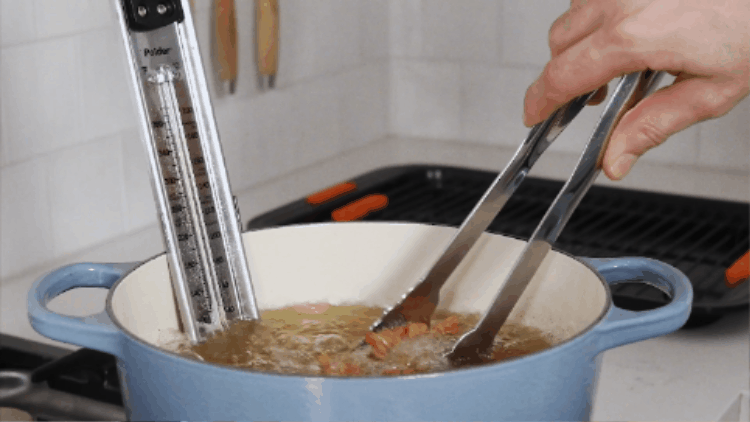
Learning how to fry food safely is yet another essential culinary skill to know, allowing you to tackle a whole new category of dishes. Frying food can be daunting at first, especially if you have limited experience in the kitchen, as it requires precise oil temperatures and constant monitoring.
Frying food simply involves submerging food in hot oil until it reaches a crispy, golden exterior. Our Round Dutch Oven simplifies the frying process, thanks to its rounded base and tall, enamelled cast iron walls, containing splatters and minimizing messes.
Want to get started with this cooking technique? Our Pomme Frites has you covered, providing a delicious side dish in just under 30 minutes.
Technique #4: How to Brown and Braise
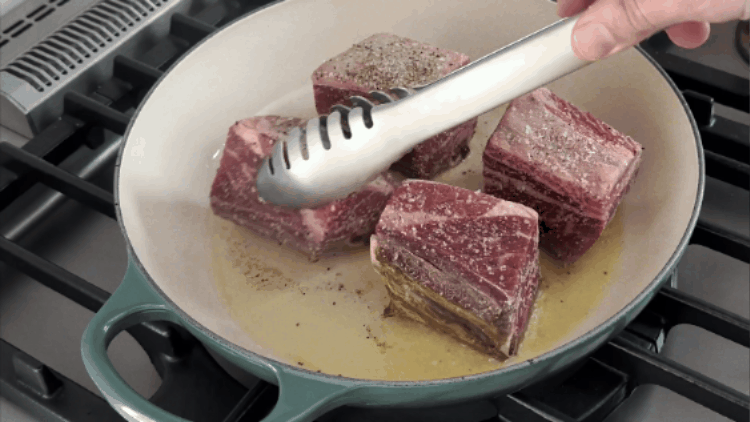
Knowing how to brown and braise is a surefire way of elevating traditional meal preparation and is particularly ideal for meat lovers. These cooking techniques offer a number of benefits, from enhancing the flavor, tenderness, and richness of the meat to creating memorable main courses.
Our Braisers are the ideal piece of cookware to experiment with these cooking techniques, featuring a shallow base and a domed lid. Its wide base offers ingredients a consistent heat source, providing superior heat retention to slow cooking food evenly.
Take, for example, the mouthwatering Braised Beef Ribs recipe, where the beef ribs are initially browned and then braised for hours. The result is tender, fall-off-the-bone ribs, served directly from our iconic Braiser. Mastering browning and braising ultimately opens the door to creating restaurant-worth dishes from the comfort of your own kitchen.
Technique #5: How to Filet a Fish
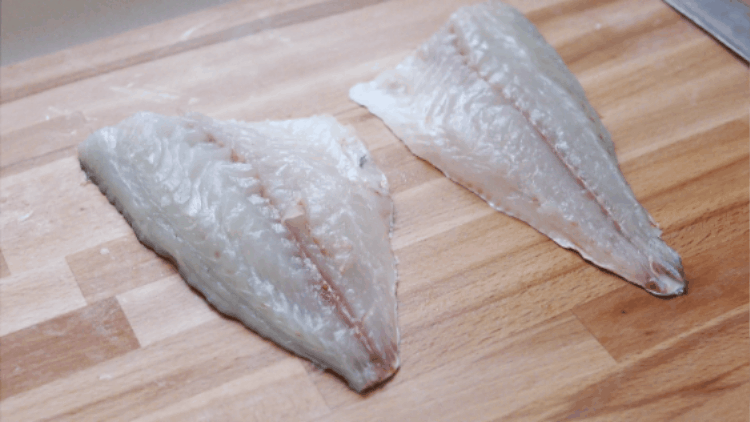
Knowing how to filet a fish equips you with the skills you need to elevate traditional recipes, injecting freshness all the while reducing food waste. Filleting involves the precise removal of the fish's flesh from its bones, resulting in boneless filets that are perfect for a wide range of recipes. The key, however, is selecting the perfect knife – none other than Le Creuset’s Carving Knife.
Featuring a long, thin blade, these carving knives are ideal for slicing precisely along the spine of the fish from its head to its tail. Crafted with 64 layers of forged damascus steel, our Knives provide home cooks and expert chefs alike superior control in the kitchen.
From experimenting with fileting a fish to incorporating a new blend of herbs and spices into traditional dishes, our Spicy Whole Roasted Fish with Lemongrass and Ginger has it all. Presented in our elegant Heritage Rectangular Casserole, this recipe offers a delicious show-stopping main course in just under an hour.
Technique #6: How to Poach an Egg
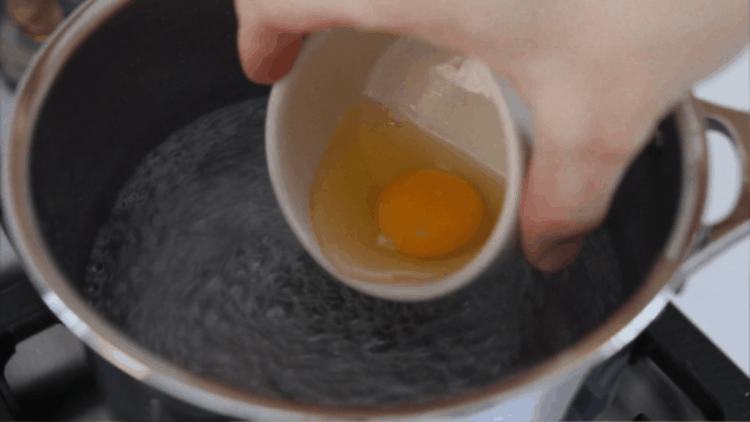
Poached eggs are a great way to add richness and flavor to your dishes, enhancing the texture and taste of various meals, whether it is breakfast, brunch, or a light dinner. Poaching preserves the delicate, custard-like texture of the yolk while ensuring a perfectly set white. It is a healthy and low-fat cooking method that is ideal for Eggs Benedict, salads, or when served on its own.
To poach an egg, bring water to a gentle simmer in our Toughened Nonstick Pro Saucepan, add a splash of vinegar, and create a gentle whirlpool in the water. Next, crack a fresh egg into a ramekin and carefully slide it into the swirling water. The swirling motion helps the egg white wrap around the yolk, creating that characteristic, elegant poached egg shape.
Technique #7: How to Make a Caramel
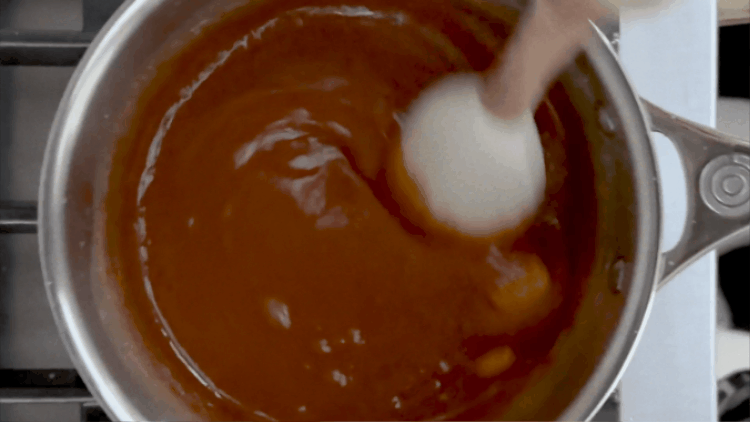
Essentially, caramel is the result of heating sugar until it transforms into a beautifully golden-brown liquid. To master this baking technique, be sure to have your Revolution® Large Spatula and Stainless Steel Saucepan handy.
Our Saucepan is the perfect piece of cookware to heat up the sugar without overcooking it. Once the sugar melts, maintain it in motion by swirling the pan, preventing unwanted crystallization. As the sugar turns a rich golden brown, carefully introduce cream and stir vigorously, achieving a smooth and velvety caramel.
Technique #8: How to Knead Dough

The art of kneading dough plays a fundamental role in the world of baking, particularly as it applies to the creation of bread and pastries. Kneading is what imparts structure, texture, and elasticity to dough, as it develops gluten. The end result is a smooth, elastic, and cohesive dough with enhanced rising capabilities.
Learning how to knead dough is simple! Start by dusting a clean surface with flour to prevent sticking and then flatten the dough with your hands. Next, after folding the dough in half, use the heel of your hand to knead, turning the dough a quarter turn. Repeat this step until it becomes smooth and elastic before shaping the dough into a ball and placing it in a covered Stainless Steel Mixing Bowl to rise.
From Dutch Oven bread to a range of pastries, this baking technique serves as the basis for a number of recipes. Not familiar with dough kneading? Watch our instructional how-to video!
Technique #9: How to Steam Clams and Mussels
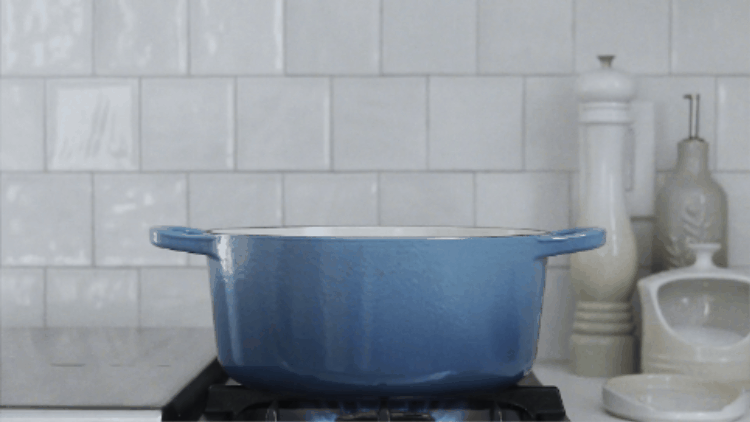
Learning to steam clams and mussels is a delightful way to infuse your seafood dishes with flavor, bringing out the best in shellfish. This cooking technique helps your clams and mussels retain their natural juices and essence by gently exposing them to steam.
The Round Dutch Oven creates the ideal environment for steaming clams and mussels, locking in heat and moisture thanks to its tight-fitting lid and thick, enamelled cast iron walls. Our Dutch Ovens are exceptional retainers of heat by nature, ensuring all your ingredients slow-cook evenly until they are ready to be served.
Our Steamed Mussels recipe has all the makings to become an instant classic, offering a flavorful and hassle-free main course in just under 30 minutes. Whether you are a seasoned seafood enthusiast or just starting, learning to steam clams and mussels opens the door to a world of culinary possibilities.
Technique #10: How to Make a Roux
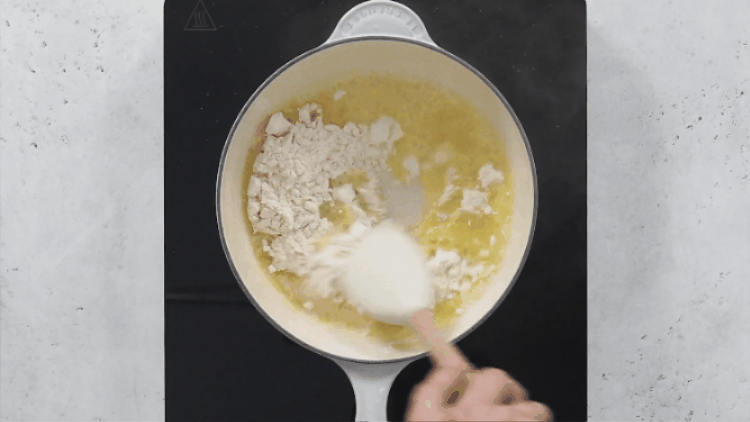
No repertoire of recipes is complete without the fundamental roux. A roux, a mixture of equal parts flour and fat, serves as a versatile thickening agent for sauces, gravies, and soups, and can be used to enhance certain recipes. Best of all, learning how to make a roux is as straightforward a cooking technique as it comes.
Simply, combine equal parts of flour and fat in our Saucier and stir it together until it reaches the colour needed for your dish. A white roux can be used for a creamy bechamel sauce, while a blonde roux is perfect for gravy and darker sauces, most famously used in Gumbo. Our Saucier has been carefully crafted with round sides, helping you effortlessly stir the roux until the desired consistency is achieved.
The importance of mastering roux is exemplified in dishes like the Scandinavian-Inspired Pork Meatballs with Tagliatelle, where it coats the meat and pasta, adding both flavor and moisture to every bite.
New Year, New You, New Possibilities in the Kitchen
Le Creuset’s cookware complements any kitchen to perfection, helping you tackle a range of new cooking techniques and baking techniques. Whether you are experimenting with making a roux, or preparing your very own caramel, these Le Creuset essentials are must-haves in any collection.
Embracing these 10 cooking techniques and baking techniques in the new year can truly elevate your culinary skills and bring a world of flavors to your kitchen. As you dive into new recipes and experiment with different methods, remember that practice makes perfect. So, here is to a year filled with tasty experiments, culinary growth, and the joy of savoring your own creations.
These were the 10 cooking techniques and baking techniques we identified that can help you become a master chef in 2024. For more inspiration, visit our very own Cooking School or our blog and explore new recipes. Happy cooking!

